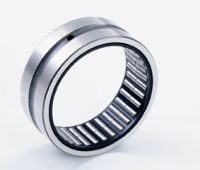Roller Bearings Key to Energy Efficiency

Schaeffler Group Industrial’s efficient rolling bearings with optimized friction from the INA and FAG brands are a key component for the entire industry. Rolling bearings make an important contribution to saving energy and conserving resources and, at the same time, increase the performance and competitiveness of machines and plants. The Schaeffler Group’s range of energy-efficient solutions not only covers the design and production of rolling bearings with optimized friction, but also includes the development and use of simulation and calculation tools and the analysis and an understanding of the entire system with its bearing supports.
The new machined needle roller bearing with the TWin Cage made of plastic provides higher efficiency as a result of lower friction. In this bearing, two short needle rollers can be inserted next to each other in one cage pocket instead of the otherwise usual single long needle roller. This completely new combination of cage and rolling elements achieves a significantly lower frictional torque in comparison with conventional needle roller bearings.
All geometric parameters of inner ring, outer ring and rolling elements have been revised for the new FAG Generation C deep groove ball bearings. The optimized osculation of the rolling elements on the rings has made it possible to reduce the friction by up to 35 percent compared with the previous generation. The operating life and performance increase significantly with considerably reduced energy consumption.
The optimization of the rib contact in the tapered roller bearing is particularly significant: The frictional torque of conventional tapered roller bearings increases dramatically with increasing axial loads in particular. The Schaeffler Group has therefore revised the geometry, surfaces, materials and dimensional and running accuracy of its new X-life tapered roller bearings. By using these measures in combination with the optimized contact geometry of the inner ring rib and roller end face, the frictional torque is reduced by up to 75 percent compared with conventional products.
In addition to high radial loads, cylindrical roller bearings can also support axial loads if they are used as semi-locating or locating bearings. Axial loads are transmitted via the rolling element end faces and ribs. Using new calculation methods and changed manufacturing processes, the Schaeffler Group’s engineers optimized the contour of the roller end faces and the contact conditions between the end face and rib, and thus significantly increased the axial load carrying capacity. The more rapid formation of a lubricating film and the lower contact pressure reduce the frictional torque under axial loads by up to 50 percent. This increases efficiency considerably.





